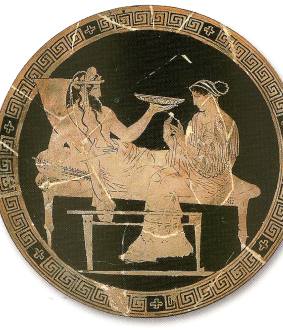http://www.stephanie-osborn.com
Sara Stamey is a new friend! Word has been getting around in certain parts of the writing community about this blog series, and Sara was one of those who stepped up to the plate and said she wanted to be involved! So you and I will be getting to know her together, through her articles on the art of storytelling. From what I can tell, I think she may be a lot like me!
Enjoy!
~~~
Thanks,
Stephanie, for the opportunity to explore approaches to incorporating romance
into stories that span all genres – and thanks to the authors of the
fascinating excursions already posted.
My own novels
tend to cross genres, including mainstream, science fiction, fantasy,
mystery/suspense, and thriller plots, but they all include romantic subplots.
As other writers in this series have noted, where would the human interest lie without
relationship tangles? A lot of those tangles involve romantic attraction and/or
consummation. Where I depart from Romance as a genre is that the love/sex
relationship is not my main plot, but rather interwoven into other urgent story
issues. It’s another thread of tension
to pull readers along – will the lovers get together despite challenges? Maybe
because of my style or themes, I usually avoid a “tied up in a bow” neat ending
to the romance – more gray areas and ambiguity about where this relationship
might go. Because, well, that’s life!
I’ll illustrate
my approach by starting with my early science fiction series from Ace/Berkley,
the first novel Wild Card Run. The
main plot concerns a rebellious game-designer from a restrictive home planet
who is challenging the control of humanity by the Cybers, an
artificial-intelligence network. (I published this back in the 1980s, and I’m
actually listed in some databases as one of the first “Cyberpunk” authors along
with William Gibson and others, which tickles me.) Anyway, my heroine Ruth
Kurtis is forced to return to her family farm and polyandrous culture (women
have multiple husbands), where she has to resist her attraction to her mother’s
newest husband, a young man the daughter’s age. This underlying romantic
tension helps drive the main plot of her rebellion against the Cybers, and also
contributes to one of the themes of the novel, examining the impact of new
technologies on human values. And of course, it never hurts to raise issues of social
taboos, and the loyalty and betrayal connected with forbidden love – perennials in storytelling.
The next two
novels in the series, Win, Lose, Draw and
Double Blind, explore ramifications
of nontraditional romantic possibilities – sexual love between different
humanoid races, and between human and machine – which seems to be a hot topic
today, with the film “Her.” These elements serve to advance my larger plot
speculations about the difficulty of defining humanity and identity, which again
are timeless themes keeping writers and readers busy over the past centuries.
My recent novels
are more mainstream, but again melding genre elements. Islands, romantic
My upcoming
metaphysical thriller The Ariadne
Connection weaves together three perspectives on a near-future crisis
concerning a geomagnetic reversal and a New Leprosy plague. My three main
characters become entangled in various romantic subplots, from a tension-filled
love triangle, to transgendered love, to traditional heterosexual love with
reservations and spiritual dimensions. The main thriller plot is the focus of
the novel – a young Greek scientist is christened “Saint Ariadne” when she
discovers she can heal the New Leprosy by “laying on hands.” Various dangerous factions
pursue her for their own agendas, and the three main characters are mostly
occupied with evading pursuit while Ariadne learns to control her growing
powers, which have the capability to destroy as well as heal. Love and sex
under conditions of extreme uncertainty and stress are opportunities to explore
dimensions of the characters, particularly Ariadne, who must weigh eternal
questions: Does the end justify the means? Should you use people who love you
in the service of a higher goal? Is the focus on a mission strengthened or
weakened by allowing intimacy with a partner?
Do we lose ourselves when we give too much to another person? Does the
joy of loving outweigh inevitable pain and loss?
I guess it’s
obvious that I’m fascinated by the nuances of human behavior, the way our
desires color our notions of “truth” and “good versus evil,” and I love to
throw characters into stressful situations that test their mettle. Love is always a big challenge to throw in
the path of a character’s goals, as that tug of irrational attraction can
really toss in a wild card. Will the relationship strengthen or weaken our
characters? What will they learn about themselves that we can share? I hope my
stories entertain as well as involve my readers in these enduring explorations.
Author bio:
Sara Stamey’s extended
travels in out-of-the-way corners of the globe include treasure hunting and
teaching scuba in the Caribbean and Honduras, operating a nuclear reactor, and owning
a farm in Southern Chile. Now resettled in her native Northwest Washington, she
teaches creative writing at Western Washington University and offers editing
services as a “book doctor.” She shares her Squalicum Creek backyard with wild
critters and her cats, dog, and very tall husband Thor.
Her romantic suspense
novel Islands is described by
reviewers as “an intellectual thriller” and "a superior suspense novel….a
stomping vivid ride.” A new eBook edition will be released by Book View Café on
May 6.
~~~
Be sure to check out her books, folks! They're worth looking into!
And we'll have her back soon to tell us about her upcoming book release!
-Stephanie Osborn
http://www.stephanie-osborn.com



.jpg)




















